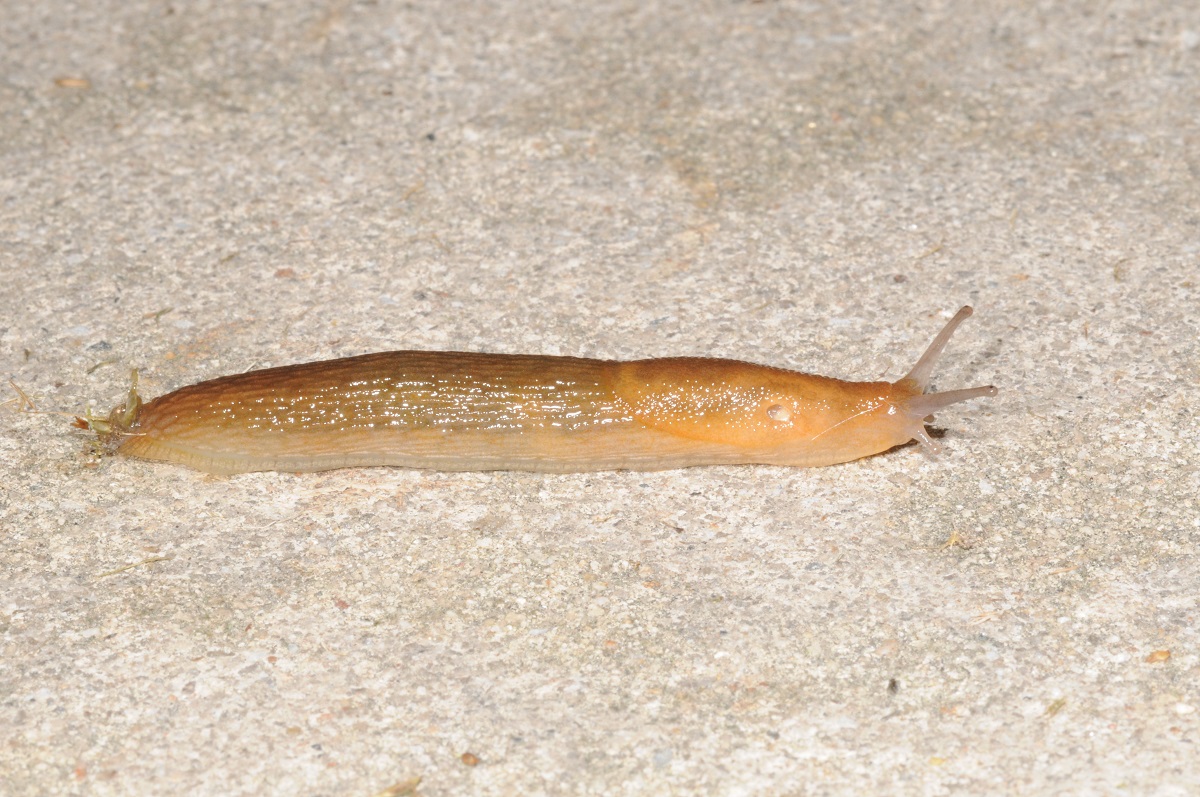Slugs, Vol. 4, No. 28
Related News
May 19, 2015
May 15, 2015
May 5, 2015
April 24, 2015
April 2, 2015

Various species
Order: Mollusca
Family: Gastropoda
Slugs are not insects, but the holes they chew in the foliage of tender leaves or susceptible fruit are often mistaken for insect damage. The real culprits are not usually present when the damage is being examined because slugs usually retreat to some dark, moist protected area during the day. But the shiny dried slime trails they leave behind are a sure sign of slug activity. Because they thrive in cool, moist environments with plenty of decaying organic matter and tender foliage, slugs are common pests in raised vegetable beds, strawberries, and low-growing, shade-loving ornamental plants, such as hosta. The mulch, leaf litter, supplemental watering, and structural harborage associated with these situations is a boon to slugs. They can also destroy young emerging seedlings.
Note that it is slugs we are discussing here, not their shell-bearing relatives the snails. Elsewhere in the world, some species of snails do damage plants, but here in the South, most of our native snails cause little damage to living plants. Slugs are another matter; both adults and immatures have file-like, rasping mouthparts that they use to “chew” into tender leaves and fruit, and some species can be quite damaging.
Control: Early preventive management and treatment is the key to successful slug control. Once strawberries are getting ripe or lettuce is ready to harvest, it is too late to start trying to control slugs. Depending on the situation, cultural controls may include limiting mulch and plant debris; limiting physical harborage sites; pre-plant soil solarization; using drip irrigation, rather than sprinkle irrigation; watering early in the morning, rather than in the afternoon or evening; and thorough tillage to cover old plant residue. Often, good cultural practices are all that is needed to prevent slug problems.
Baits containing iron phosphate or metaldehyde are the best chemical treatments for slugs. Read labels carefully before applying. Metaldehyde baits must not be used immediately around edible plants, and baits containing iron phosphate are generally safer for use in areas frequented by pets or young children. To protect slug-prone plants such as strawberries, raised vegetable beds, and hostas, it is best to begin a control program in the fall and resume treatment early the following spring. Baits are most effective when applied under cool, moist conditions, when slugs are most active, and when applied near areas where slugs hide. Control can be improved by applying baits after rainfall, or by irrigating lightly before or after applying baits. Insecticide sprays do not work on slugs; they just slough them off--literally.
Blake Layton, Extension Entomology Specialist, Mississippi State University Extension Service.
The information given here is for educational purposes only. Always read and follow current label directions. Specific commercial products are mentioned as examples only and reference to specific products or trade names is made with the understanding that no discrimination is intended to other products that may also be suitable and appropriately labeled.